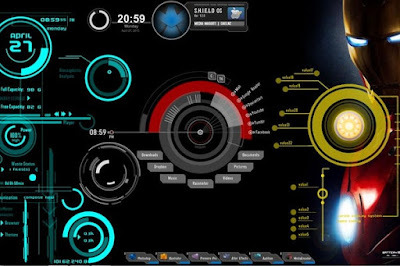Supercapacitor
Supercapacitor
Introduction:-
A supercapacitor (SC), also called an ultracapacitor, is a high-capacity capacitor with a capacitance value much higher than other capacitors, but with lower voltage limits, that bridges the gap between electrolytic capacitors and rechargeable batteries. It typically stores 10 to 100 times more energy per unit volume or mass than electrolytic capacitors, can accept and deliver charge much faster than batteries, and tolerates many more charge and discharge cycles than rechargeable batteries.
Benefits of Super-Capacitor or Ultra-Capacitor
The demand of Supercapacitors is rising day by day. The main reason for the rapid development and demand is due to many other benefits of Supercapacitors, few of them are stated below:
- It provides a very good life of approx 1million charge cycles.
- The operating temperature is -50 degrees to 70 degrees almost, which makes it suitable for use in consumer applications.
- A high power density up to 50times, which is achieved by batteries.
- Harmful materials, toxic metals are not the part of the Super Capacitors or Ultracapacitors manufacturing process which makes it certified as the disposable component.
- It is more efficient than batteries.
- Requires no maintenance compared with batteries.
Energies in capacitor
A capacitor store energies in the form of Q = C x V. Q stands for Charge in Coulombs, C for capacitance in Farads and V for voltage in volts. So, if we increase the capacitance the stored energy Q will also increase.
The unit of capacitance is Farad (F) which is named after M. Faraday. Farad is the capacitance unit in respect of coulomb/volt. If we say a capacitor with 1 Farad, then it will create a 1-volt potential difference between its plates depending on the 1-coulomb charge.
1 Farad is a very large value capacitor to use as a general electronic component. In electronics, Generally, microfarad to Pico farad capacitance is used. Microfarad is denoted as uF (1/1,000,000 Farad or 10-6F), nano farad as nF (1/1,000,000,000 or 10-9F) and Pico farad as pF (1/1,000,000,000,000 or10-12F)
If the value becomes much higher, like mF to few Farads (Generally <10F), means the capacitor can holds much more energies between its plates, that capacitor is called as Ultra capacitor or Supercapacitor.
The energies stored in a capacitor is E = ½ CV2 Joules. E is the stored energy in joules, C is the capacitance in Farad and V is the potential difference between the plates.
Construction of a Supercapacitor
Supercapacitor is an electrochemical device. Interestingly, there are no chemical reactions are responsible to store its electrical energies. They have a unique construction, with a large conductive plate or electrode, which are closely situated with a very small surface area. Its construction is the same as an electrolytic capacitor with a liquid or wet electrolyte between its electrodes. You can learn about different types of capacitors here.
Supercapacitor acts as an electrostatic device storing its electrical energy as the electric field between the conductive electrodes.

The electrodes, Red and blue, are coated double-sided. They generally made of graphite carbon in the form of carbon nanotubes or gels or a special type of conductive activated carbons.
Difference Between Capacitor and Supercapacitor
Capacitor
|
Supercapacitor
| |
Definition
|
In capacitors, energy is stored in their electric field.
|
A supercapacitor is also known as ultracapacitor or double-layer capacitor. A supercapacitor tends to differ from an ordinary capacitor due to its very high capacitance.
|
Energy Density
|
Comparatively low
|
Comparatively very high
|
Dielectric materials
|
Dielectric material like ceramic, polymer films or aluminum oxide are used for the separation of the electrodes.
|
Activated carbon is used as a physical barrier between the electrodes so that when an electrical charge is applied to the material a double electric field is generated. This electric field acts like a dielectric.
|
Cost
|
Comparatively cheap
|
Comparatively expensive
|
Advantages and Disadvantages
The benefits of supercapacitors include:
- Balancing energy storage with charge and discharge times. While they can’t store as much energy as a comparably sized lithium-ion battery (they store roughly ¼ the energy by weight), supercapacitors can compensate for that with the speed of charge. In some cases, they’re nearly 1,000x faster than the charge time for a similar-capacity battery.
- Some electric toys that use supercapacitors can charge almost instantly. Companies like Nawa are looking to implement the same idea in real electric cars. Imagine electric cars powered by supercapacitors (rather than rechargeable batteries) that could charge to full in less time than it takes to fill a fossil fuel motor with gasoline, rather than the hours of charge time typically required by battery-operated cars.
- Wide-ranging Operating Temperatures. Supercapacitors have a much broader effective operating temperature (from roughly -40F to +150F).
On the other hand, the speed of energy exchange is, in some sense, a bug as well as a flaw. Here are some disadvantages of supercapacitors:
- Gradual voltage loss. While batteries provide a near-constant voltage output until spent, the voltage output of capacitors declines linearly with their charge.
Supercapacitors may be used where high power or energy storage is required. Supercapacitors can be used widely because of their long life & short charging time. On the other hand it has limitations due to its high cost, self discharge, packaging problems etc
This originally appeared on wikipedia.org, circuitdigest.com, spscap.com, rfwireless-world.com, slideshare.net
Uploaded by ..Aman Mansuri
TIH team member
bike+car updates Instagram link.. https://instagram.com/the_indian_autoblogger?igshid=h104bnrkdubx
Email id .... theinnovationhub2019@gmail.com
"The innovation hub" join us on following sites.....
You tube Channel like...https://www.youtube.com/channel/UCma0poNdmpG6D959dLfeAEg
Twitter link.. https://mobile.twitter.com/TheInnovationH1
Instagram link.. https://www.instagram.com/the_innovation_hub_2019/
Linkedin link ..https://www.linkedin.com/in/the-innovation-hub-7a3286186/
bike+car updates Instagram link.. https://instagram.com/the_indian_autoblogger?igshid=h104bnrkdubx


Amazing 👌
ReplyDelete